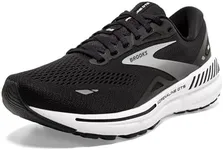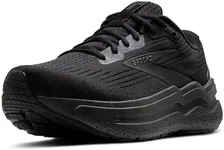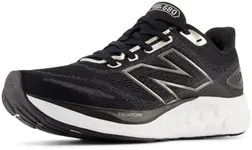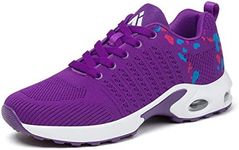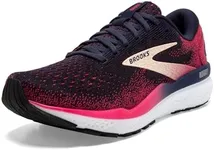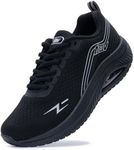Buying Guide for the Best Women S Running Shoes
Choosing the right pair of women's running shoes is crucial for comfort, performance, and injury prevention. The right shoes can make a significant difference in your running experience, whether you're a beginner or a seasoned runner. When selecting running shoes, consider factors such as fit, support, cushioning, and the type of running you plan to do. Understanding these key specifications will help you make an informed decision and find the best fit for your needs.FitFit refers to how well the shoe conforms to the shape of your foot. A good fit is essential to prevent blisters, discomfort, and injuries. Shoes that are too tight can cause pain and restrict blood flow, while shoes that are too loose can lead to instability and chafing. To find the right fit, ensure there is about a thumb's width of space between your longest toe and the end of the shoe, and that the shoe feels snug but not tight around the midfoot and heel. Try on shoes at the end of the day when your feet are slightly swollen to get the most accurate fit.
SupportSupport in running shoes refers to the level of stability and structure provided to your feet, particularly the arches. This is important to prevent overpronation (excessive inward rolling of the foot) or supination (outward rolling). Shoes are generally categorized into neutral, stability, and motion control. Neutral shoes are best for runners with a normal arch and minimal pronation. Stability shoes offer added support for mild to moderate overpronation. Motion control shoes provide maximum support for severe overpronation. Determine your arch type and pronation pattern to choose the right level of support.
CushioningCushioning refers to the amount of padding in the shoe, which affects shock absorption and comfort. This is important for reducing the impact on your joints and muscles during running. Cushioning levels can range from minimal to maximum. Minimal cushioning is suitable for runners who prefer a more natural feel and are accustomed to running on softer surfaces. Moderate cushioning offers a balance of comfort and responsiveness, ideal for most runners. Maximum cushioning provides the highest level of shock absorption, suitable for long-distance runners or those with joint issues. Consider your running distance, surface, and personal comfort preference when choosing cushioning.
Type of RunningThe type of running you plan to do will influence the type of shoe you need. Road running shoes are designed for pavement and occasional light trails, offering cushioning and support for repetitive strides on hard surfaces. Trail running shoes are built for off-road routes with rocks, mud, and uneven terrain, providing enhanced traction, stability, and protection. Cross-training shoes are versatile and suitable for gym workouts and short runs. Identify your primary running environment and choose a shoe designed for that specific purpose to ensure optimal performance and durability.
DurabilityDurability refers to how long the shoes will last before they need to be replaced. This is important for getting the best value and ensuring consistent performance. Durability is influenced by the materials used in the shoe's construction, including the outsole, midsole, and upper. High-quality materials and construction techniques generally result in longer-lasting shoes. Consider the average mileage you run and the conditions you run in. If you run frequently or on rough terrain, look for shoes with reinforced outsoles and durable uppers. Regularly inspect your shoes for signs of wear and replace them when they no longer provide adequate support and cushioning.
